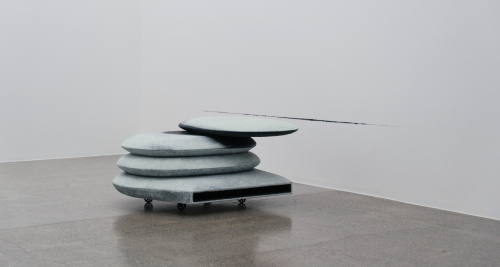Andi Rahmat on His Experience with the D&AD Judging Process
Among the many festivities and triumphs of this year’s D&AD Awards back in May, there were many things for the Indonesian design industry to celebrate. Along with the highest number entered projects from Indonesia as well as Innocean Indonesia’s Yellow Pencil for their project Yellow Canteen, the first entrant from Indonesia to earn that award level, this year’s D&AD jury panel would be the first to include judges hailing from Indonesia—one of them being Andi Rahmat, Director and Principal Designer at Bandung-based design studio Nusaé.
Founded in 2013, Nusaé, whose extensive portfolio showcases works in branding, editorial, and Nusaé’s particular specialty—environmental graphics with clients such as Tubaba, Ayana, Bintaro Design District, and more as well as numerous awards under their belt including the 2022 Good Design Award for City Branding. Andi had also previously served as a judge at other design awards, as is required of all D&AD judges, at the 2021 Young Guns Awards. As announced in January, 2024, Andi served as part of D&AD’s typography jury. “I never thought I would get such a valuable opportunity to be one of the judges for the D&AD Awards in 2024,” Andi began, “because I know this Award has been around for a long time and this is one of the most prestigious design and creative awards internationally.” He explained that the D&AD judging process involved three judging phases which were held online and then an in-person deliberation session held in the final days before the award ceremony to determine the final shortlist and pencil awardees.
In his opinion what sets his experience with D&AD apart from his other judging experience is the level of complexity. “Of course, each award has its own provisions and standards. For the D&AD Award, I feel quite complex because the assessment is from various sides. For example, from the quality of the design, the execution technique, the innovation, the impact and several other assessment criteria that require quite a long discussion.” Andi explained.
Judging the D&AD Awards is clearly no simple feat. With such incredible works being submitted from all over the world, it is no wonder that the deliberation process consumes so much time. “The final stages of the judging were carried out from eight in the morning until late at night, which was carried out together with six fellow judges in the typography category,” Andi recalled. There is also the responsibility to understand the context of each project submitted. “Firstly, because the jury projects come from various countries, [we have to] work quite hard to understand the context of each project being judged. Secondly, English is not my first language, so I have quite a challenge related to language, especially when discussing with native English speakers. There are actually no particular challenges, but other countries, for example from China, Japan, Singapore, have more than one judge representing them while I alone come from Indonesia. Hopefully in the future there will be more judges from Indonesia involved so that they can help carry Indonesia’s in the international designer network.”
One of the main factors Andi prioritized in his judgment process is contextuality. “Of course, the first thing that is looked at is the context of the project, the background of the project, then the success of the objectives in terms of what and who the project is for,” he explained. Another factor is the overall visual beauty. “Details in typography, design systems, printing techniques or digital implementation, what innovations and novelties there are and of course what the impacts are.” These considerations are clear to see in the project he chose as a personal favorite at the “Jury Insights: Graphic & Type Design” panel held on the second day of the D&AD Festival—ADLaM: An Alphabet to Preserve a Culture. This particular project takes on the task of revising, optimizing, and digitizing the Fulani people’s previously alphabet-less language Pulaar.

Andi has observed that in the typography category many designers are responding to technology at the moment. “How the implementation medium of typography is not only in print media but also in digital or screen media. This provides a very broad possibility in its visual output. In addition to many that are good and contextual, there are also some that sometimes take an experimental approach just for the sake of it while the meaning and function cannot be delivered properly,” he explained. He further elaborated that trends are often undeniable and will always occur in each era, usually as a response to conditions from a wave that was purposefully created or in response to the innovations and technology available to us. “As long as the design that follows the trend is placed according to its context, I think it is okay. Trends can also sometimes present something new and significantly different from what already exists, but of course it must be thought through deeply,” Andi noted.
He reiterated his concern that while many type designers are taking an experimental approach, their designs often lack context. “In terms of output, I see a lot of variety and a lot of experiments in the typography category that I judge, but there are not many that are truly high quality, because with the ease of accessing technology for anyone, so that most of them are similar technically and in terms of output.” he explained. “More and more type designers are being born with the ease of technology and learning information, also driven by the needs of the industry.” However, Andi was glad to observe an overall improved quality in the typography and type design work coming from Indonesia. “I think the impact of easy access to information that provides many good reference opportunities is also driven by the needs of the industry that is aware that the market now has an awareness of better design quality.”
In Andi’s opinion, the D&AD Awards, as an international design award with a multinational jury panel, is crucial in benchmarking the capabilities and quality of work at an international level. Specifically for Indonesian creative practitioners, he feels that D&AD is an opportunity to carry and promote Indonesian design and creativity on a global stage. Gaining an award could also serve as a way to gain credibility as a designer. “Awards like D&AD can also provide references for every generation on how the role of design and creativity can have a positive impact on life. Innovation is so important that it encourages designers to seek new possibilities and focus on improving quality and having a positive impact on life.”













